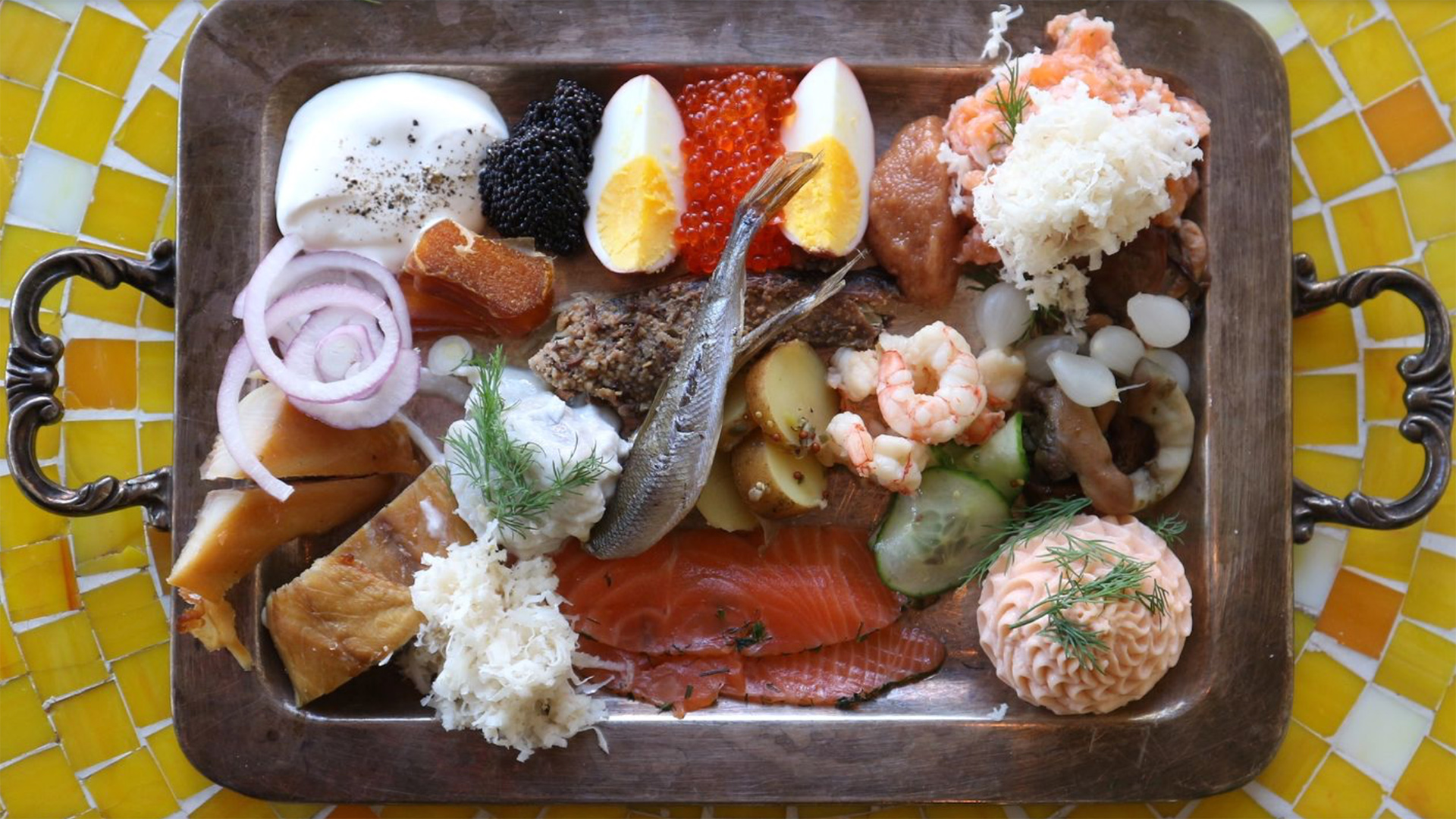Fish Platters Aren't Just Breakfast, They're A Philosophy
True story: A man walks into a Jewish funeral. Or, more precisely, he walks into the house where the family of the deceased is sitting shiva. He casts a quick glance around the foyer and into the dining room. And then he bellows, "Where's the fish platter?"
Because, of course, no Jewish funeral is complete without a fish platter: some bagels, some lox, cream cheese, red onion, whitefish salad, maybe some pickled herring or smoked chub. But never shellfish. It doesn't matter how observant you are: Shellfish aren't kosher, so you never put shrimp on a fish platter. A deli tray is nice, but it's the more expensive fish platter that shows the mourners' collective love and esteem for the deceased (and also his or her family).
The fish platter is also an integral part of the break-fast meal at the end of Yom Kippur, which is coming up next Wednesday. There's no ritual reason for its importance in Jewish culture, says Leah Koenig, author of six books about Jewish cuisine, including last month's The Jewish Cookbook. Until fairly recently, the break-fast was a simple meal to mark the end of 25 hours of fasting. At some point, though, Koenig says, "people started to say, we should never miss an opportunity to bring people together over food. Literally it's a breakfast, the breaking of a fast, so you don't want heavy, meaty dishes. You want something on the lighter side that's easier to stomach."
Eastern European Jews, also known as Ashkenazi, have had a long affinity for smoked fish, she says. In a time and place with no refrigeration, it was a way to preserve fish. But they didn't eat lox because they didn't have access to salmon. Instead they had cured herring and smoked whitefish, which they ate on brown bread. It was only when they immigrated to America that bagels and lox became a quintessential Jewish meal.
"Those foods are delicious," says Koenig. "Even if we don't have to eat them, we still do. It's comforting now, a symbol of Jews coming together."
But you don't have to be Jewish to enjoy a fish platter. Mike Simmons, the chef and co-owner of Café Marie-Jeanne in Chicago, has made an art and a pastime out of assembling the perfect fish platter, serving it to customers on weekends and the city's chefs and bartenders on Monday mornings. The ideal fish platter, he says, should have a variety of different textures.
"I like to have a variety of fish," he says. "Maybe ten-ish: smoked, pickled, creamed, cured. You can have it all at once or a la carte. It's celebratory."
At the center is salmon, which is the most recognizable and also the most delicious; since it's fatty, it holds the flavor of the cures and smokes well. He uses both gravlax cured with dill and aquavit and cold smoked Nova. When he's done with the fillets, he brines the heads in maple syrup and soy sauce, coats them in pastrami spice, and hot smokes them.
Then there's kippered whiting, smoked and pickled in sweetened vinegar, which gives it a flavor that's both smoky and acidic; its leanness is a contrast to the fatty salmon. And also creamed herring, served with creme fraiche and onions. And Spanish anchovies, cured in garlic, and sable fish, and razor clams that he smokes into a kind of jerky. (No, these are not kosher.)
He serves the fish platter with potato salad, horseradish, house-made mustard, pickled cucumber, creme fraiche, pepper, lots and lots of dill, red onions and cherry tomatoes. And capers.
"I think the caper is the unsung hero of the fish platter," says Koenig. "It's a pop of brine on top of the creamy cream cheese and smoky fish. It brings it all together."
Simmons usually takes his fish platter with a shot of aquavit. But he emphasizes that there's no prescribed way to make a fish platter. It's an assemblage of what you, personally, like to eat.
"It's a philosophy," he says. "It's a way of saying, 'This is what we eat? Isn't it good? Now you eat it, too.'"
